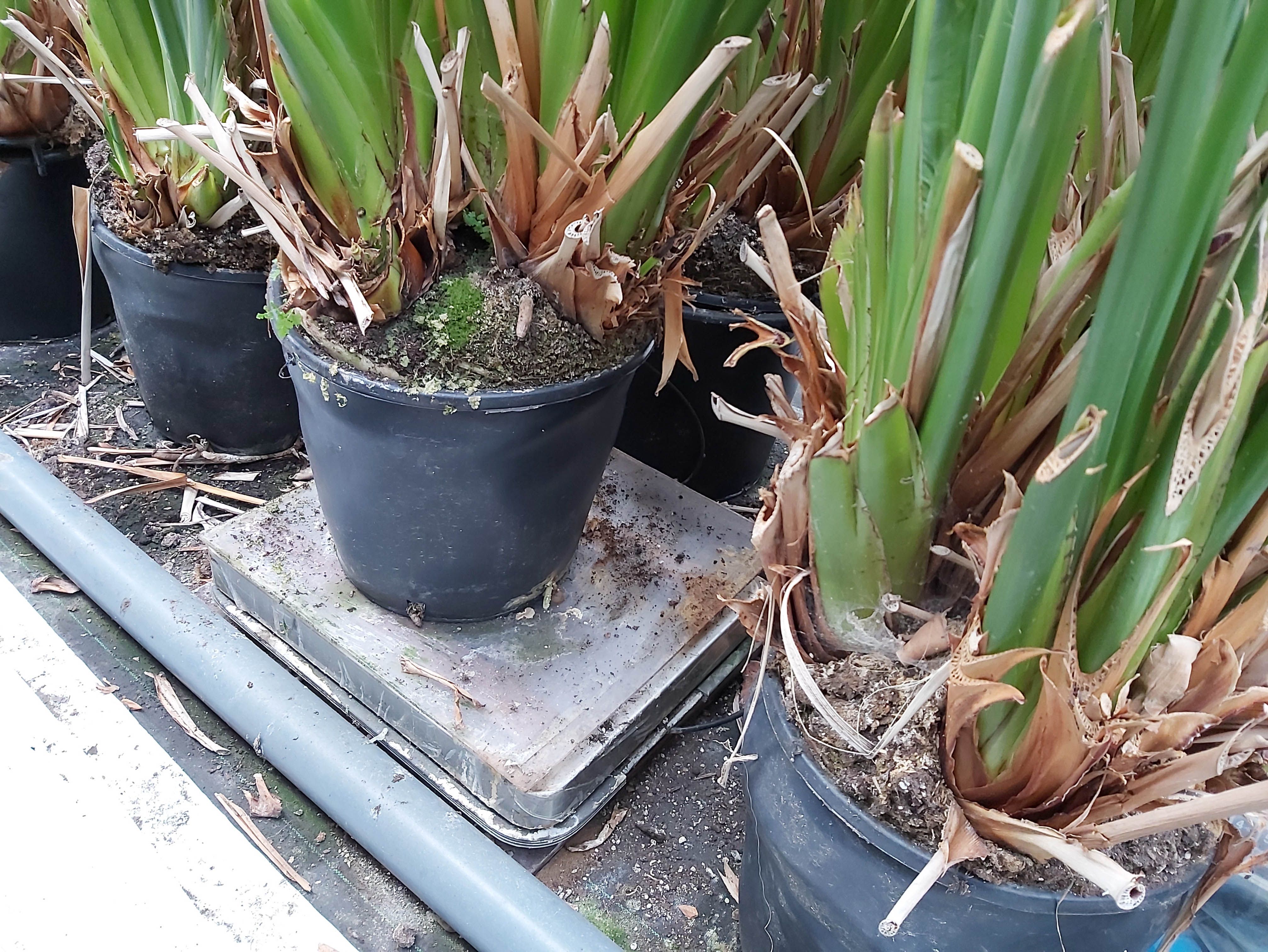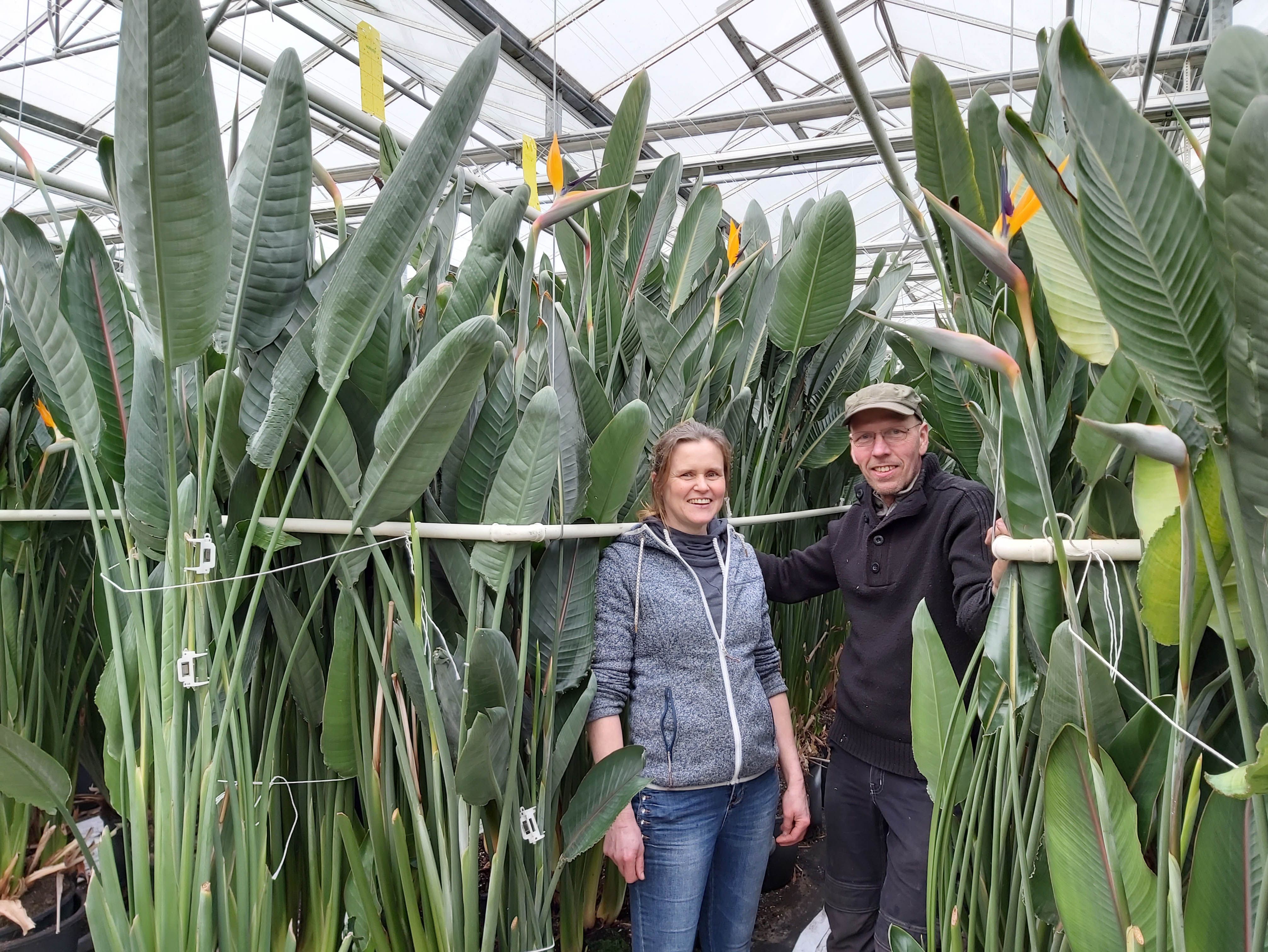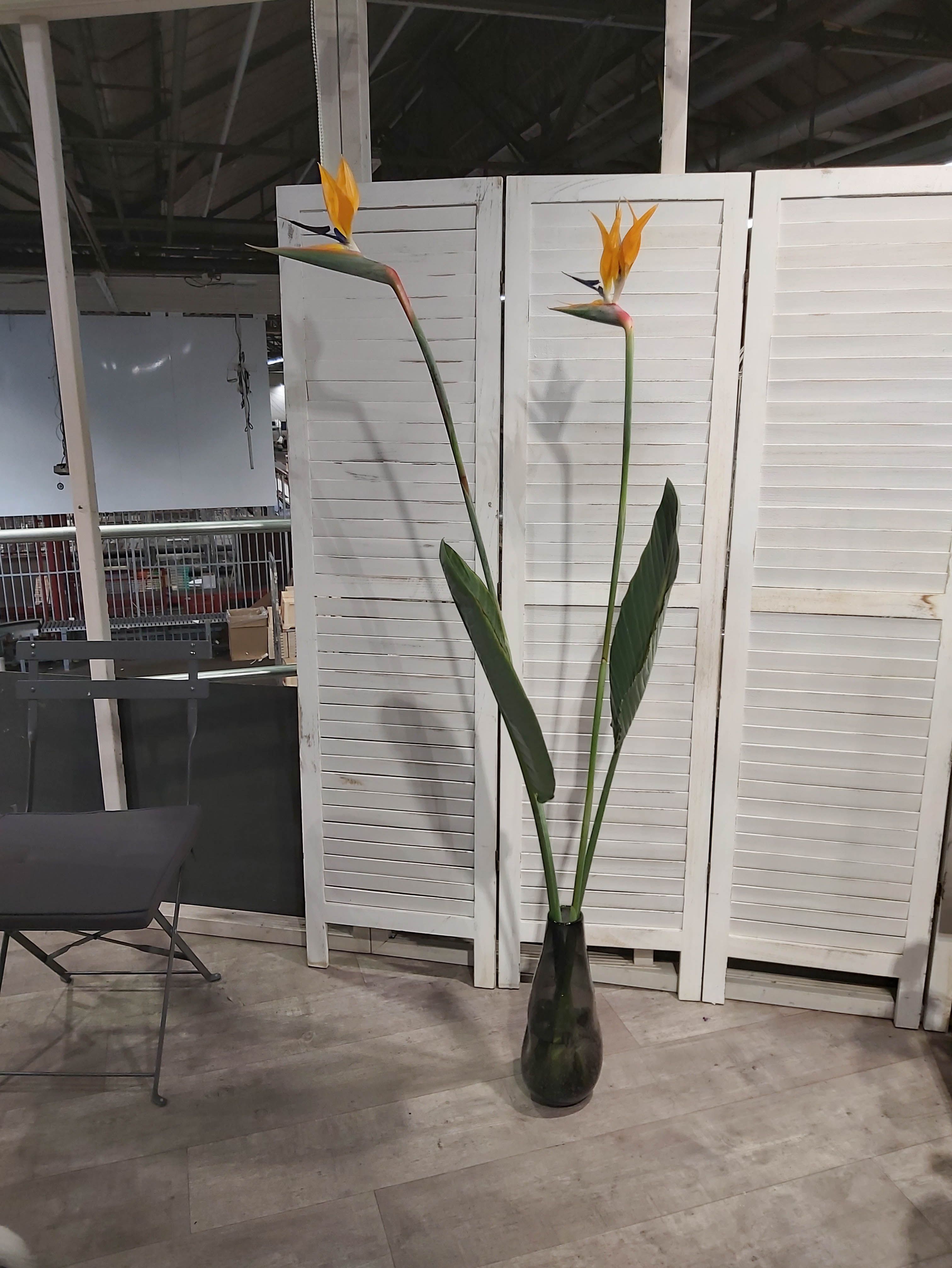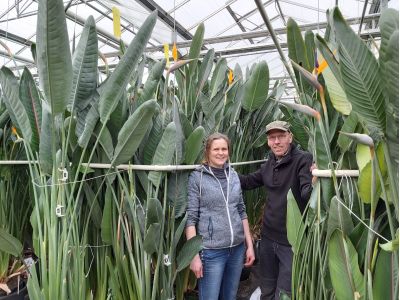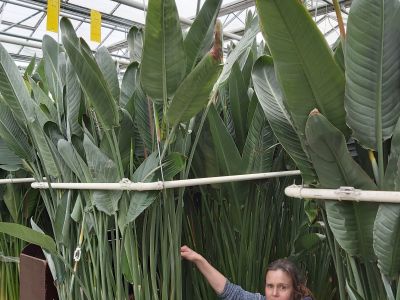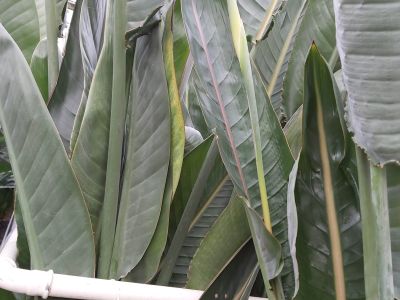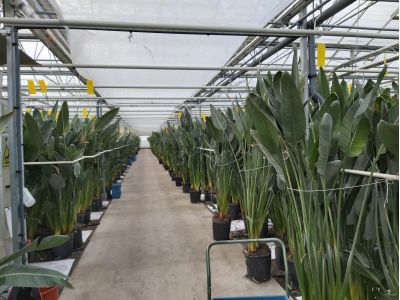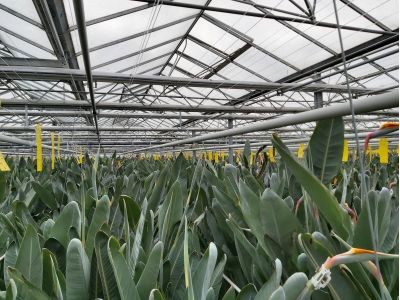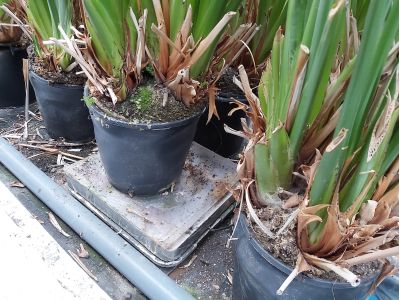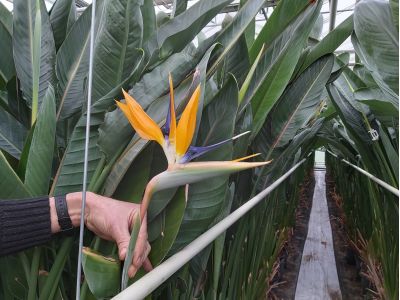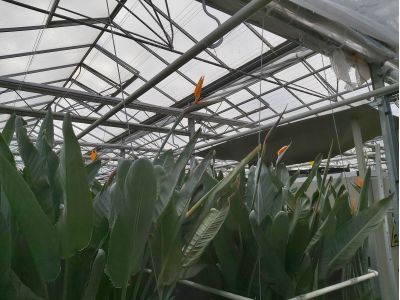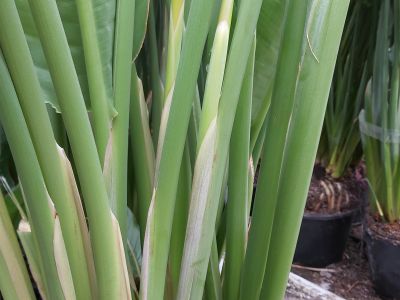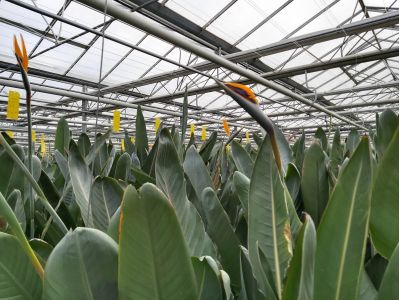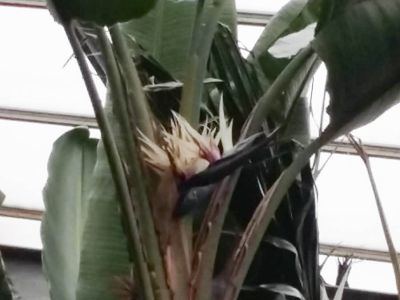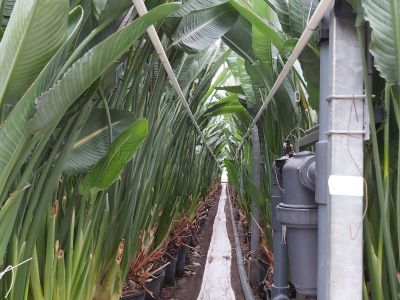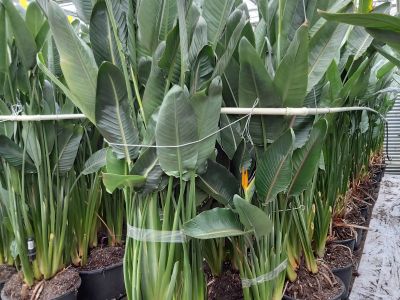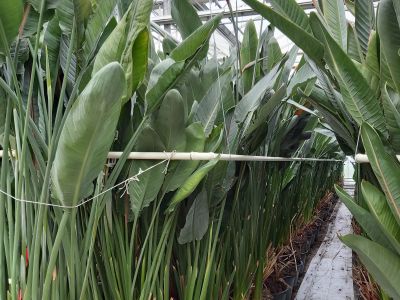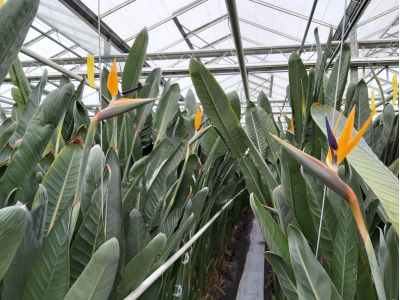Kwekerij Blok
Strelitzia
A few months ago we stumbled on a facebook post from Strelitzia nursery Blok. Interesting stories about this somewhat unknown cultivation regularly come along. A good reason for us to visit this passionate grower and spread their story. We were warmly welcomed by Leo Blok and his wife Marlies, who took the time to tell everything about this impressive crop.
Nine years ago Leo and Marlies moved from Brielle to Luttelgeest. They have left the Cymbidium cultivation behind them. The unfamiliarity of the Strelitzia appealed to them. On a small scale, without staff, they have taken on the new challenge of this rather difficult cultivation. Their motto: "Anything that’s easy, everyone can do it on a large scale, right?
Strelitzia Reginae
Strelitzia are also known as the Bird of Paradise flower. This can be easily attributed to the shape of this impressive flower. A beautiful bright orange flower with a shiny dark blue labellum grows from the comb. The stamens are located in the Labellum. What many do not know is that there are several flowers in the beak. The branches are cut when the first two flowers are open. When the first flowers have finished flowering, they can be easily removed from the comb. This gives room for the following flowers to open. A Strelitzia is a very strong flower and can easily stand in a vase for a few weeks.
Strelitzia are originally from South Africa, where it was first shipped to other countries in the 18th century. In the Netherlands the entire crop is estimated at around 20 hectares, distributed among around 20 growers. Half of the trade consists of Dutch flowers, the other half comes from Italy, Spain, Portugal and the Canary Islands. In addition to the well-known orange Strelitzia, there is another yellow variety which is known as "Yellow Josephine", this variety originated from a mutation. The "Nicolai" is a variety with white flowers, but grows very fast and is mainly sold as a pot plant. The “Nicolai” can reach a height of eight to ten meters and will not fit in a greenhouse, as a result this variety cannot be grown in the Netherlands as a cut flower. The supply comes from abroad.
Cultivation a long-term effort
A Strelitzia plant starts to give its first flowers after five years. But once flourishing, the Strelitzia is a crop that requires a lot of patience. The development of a flower takes almost a year. Before the flower grows out of the cavity of the leaf and is visible, the stem is already 40/50 cm long. After that, it takes another half a year before the flower is ripe enough to be cut. This process has to do with all kinds of factors such as temperature, light and moisture.
The plants Marlies and Leo are cultivating are 14 years old. The crop is large and impressive. The roots are thick and large, it looks like the plants are bursting out of their pots. Leo informed us that the roots are actually very thin. The meaty part around the roots is mainly for water storage. In the summer months the plants need water once a week, in the winter only once a month. during the winter months the plants have little activity and can live on their reserves. Leo and Marlies measure the water content of the plant using a scale. Based on the weight of the plant, they know whether or not they should water.
Most plant species will go limp if they don't get enough water. The Strelitzia however will hang if it is too wet. The risk of the stem to break is higher if they are too dry. This is mainly due to the structure of the stems. The stems of the Strelitzia are hollow and consist of small cell chambers. This makes the stems flexible and very strong.
Availability
Leo and Marlies have stepped into a cultivation that was completely unknown to them. In the first few years it was mainly trial and error, and they learned a lot from this experience. For a number of years now they have been in control of their cultivation process and also achieved that their crop protection is completely organic. The harvest period is between October and May. Production is low in the first months of the season, with a peak in February, March and April. A better spread of the cultivation would be better, Here also lies a bit of a challenge for Leo and Marlies. More flowers before January 1, the high quality of the branches and biological crop protection, is what makes their product exclusive!
FloraPodium, 04 February 2020

Strelitzia flower
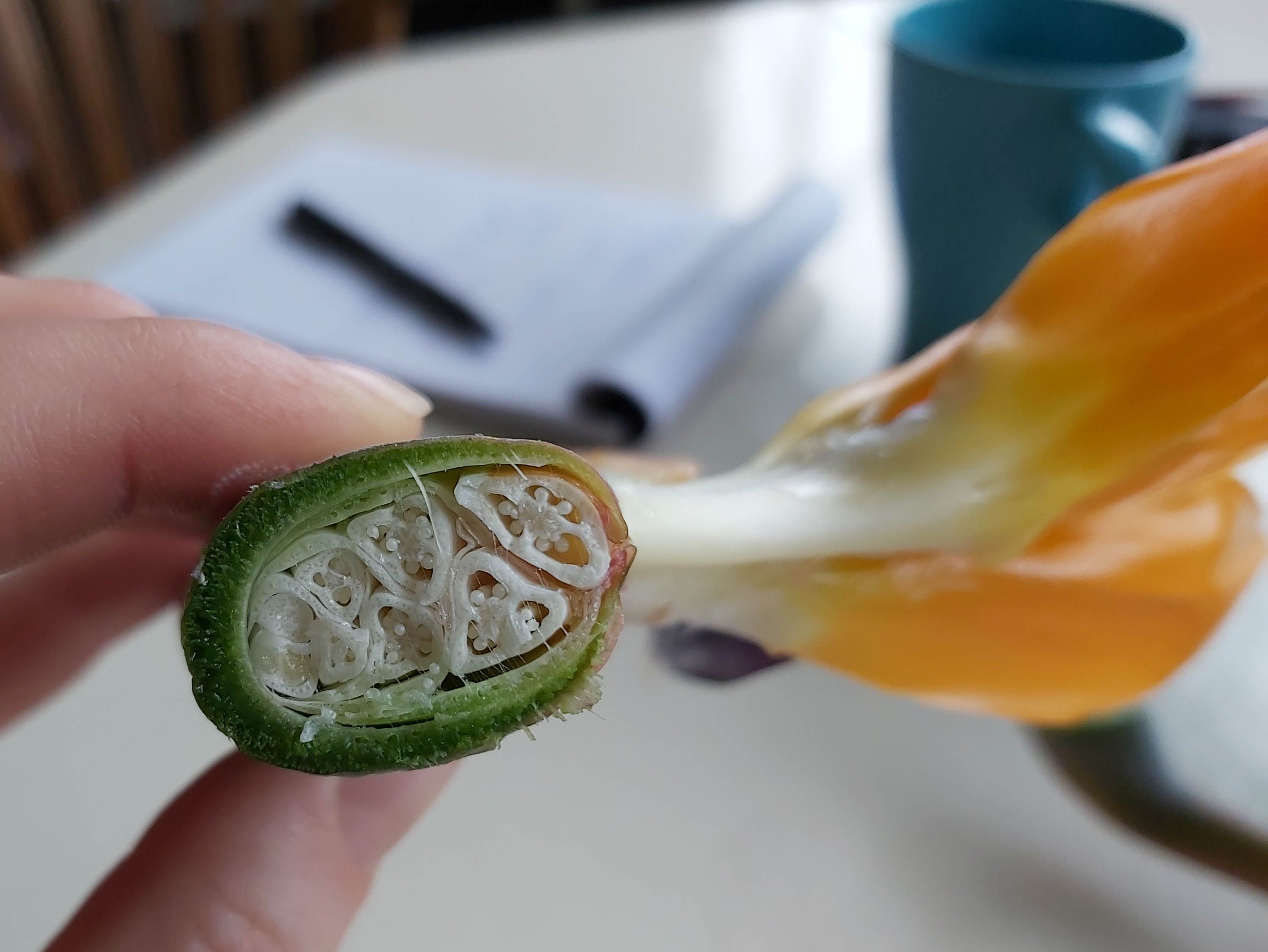
Cross-section Strelitzia flower
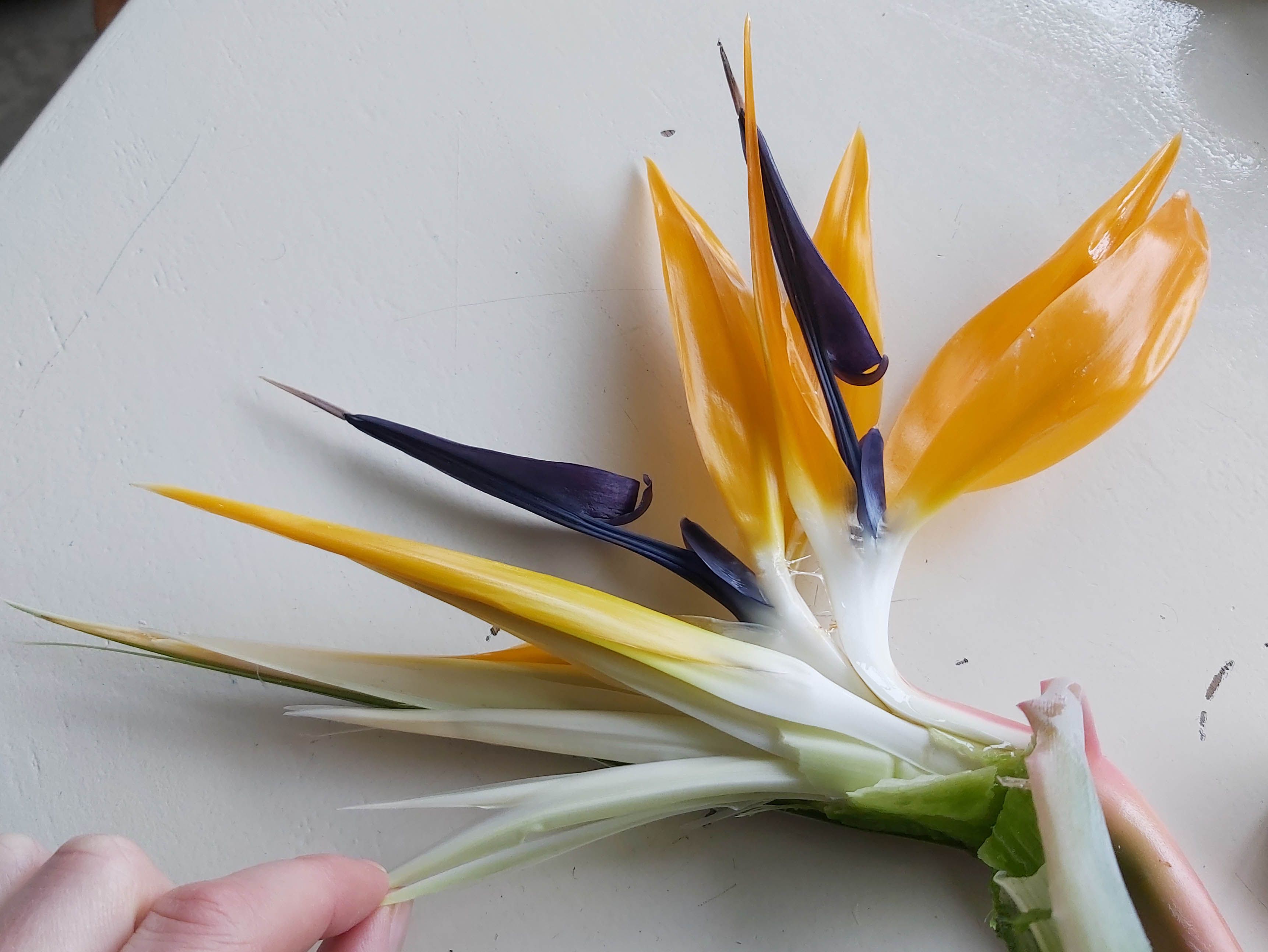
Open cut flower from the side
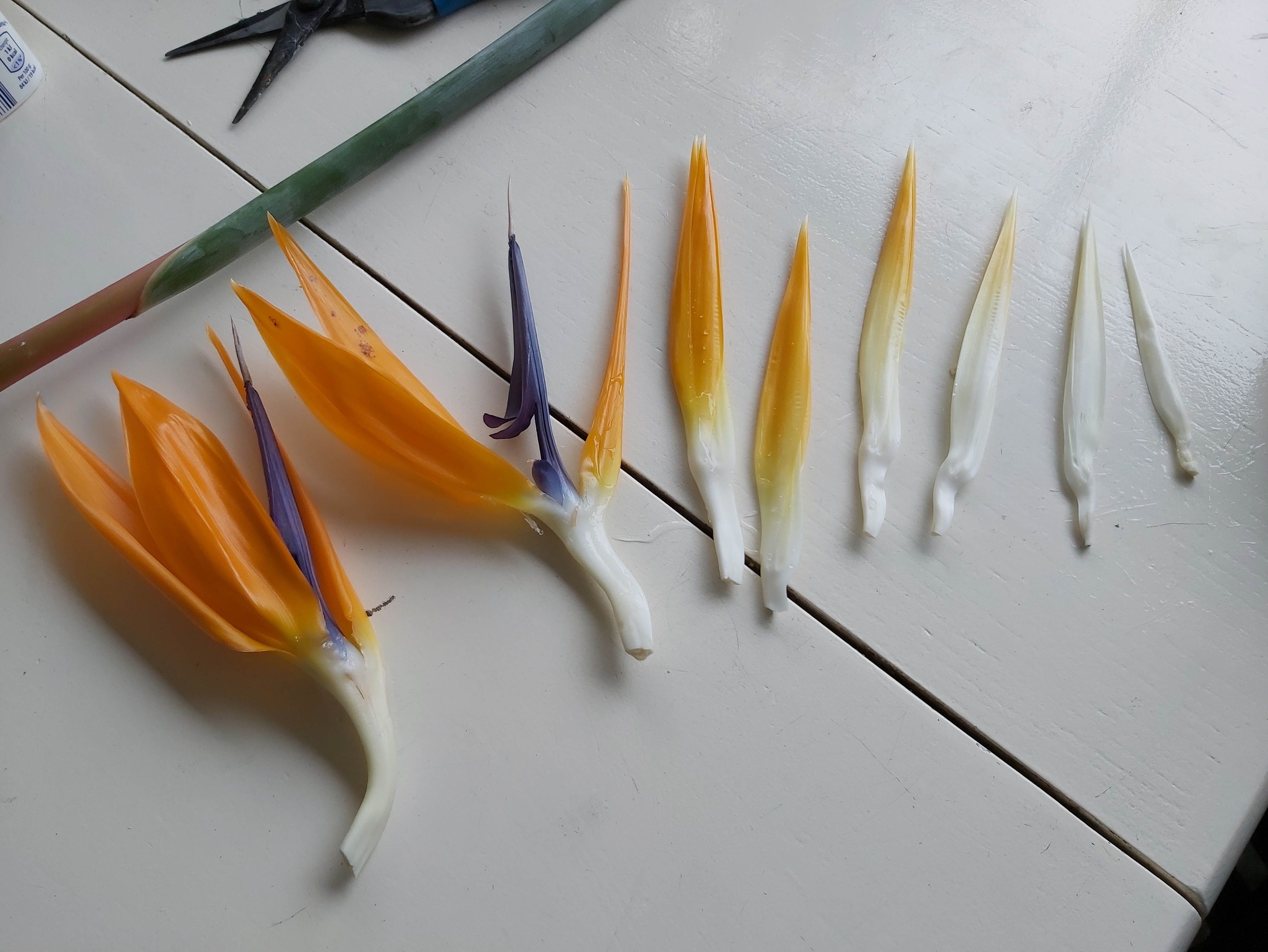
All flowers from the comb
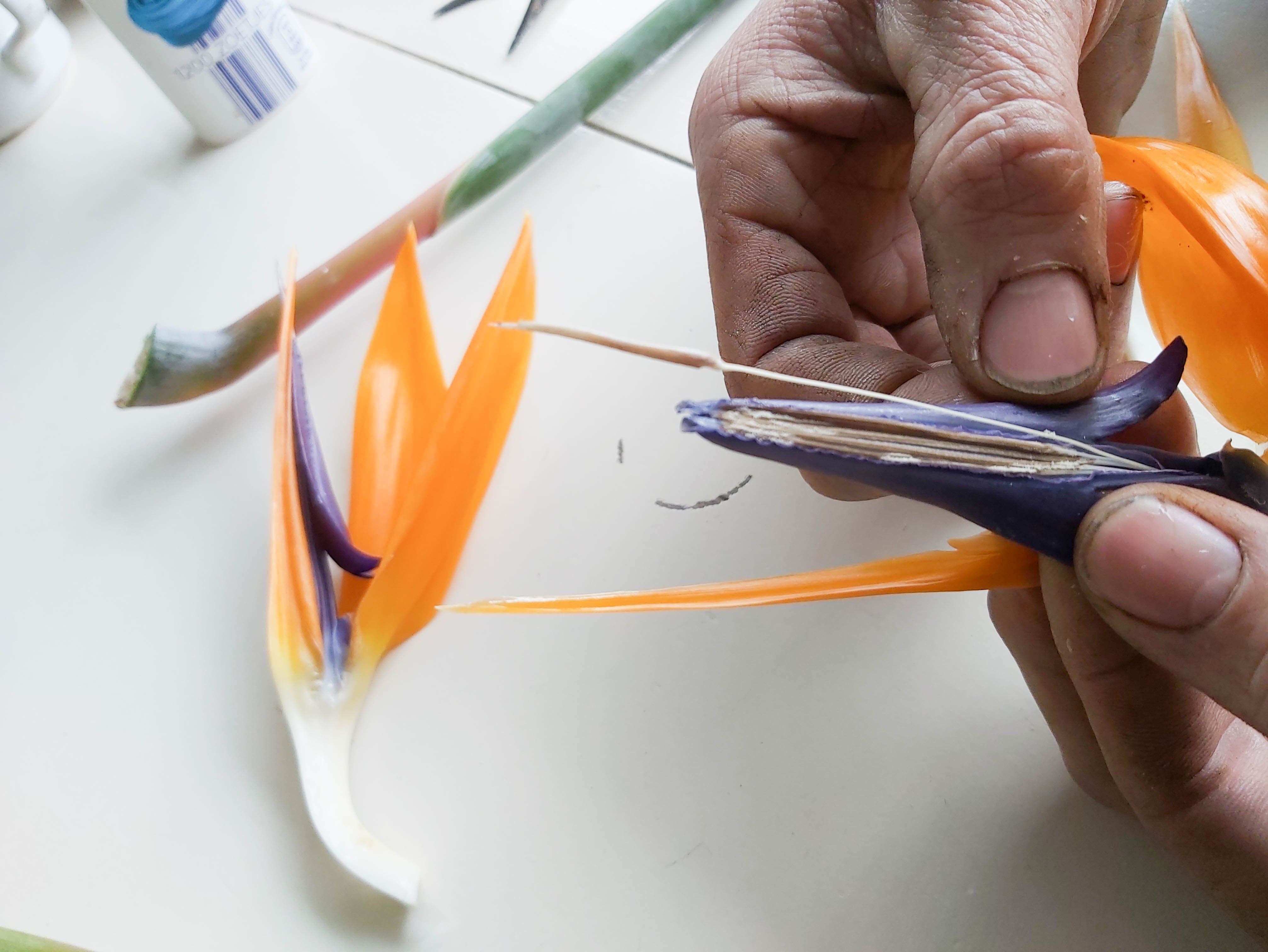
Stamen of the flower
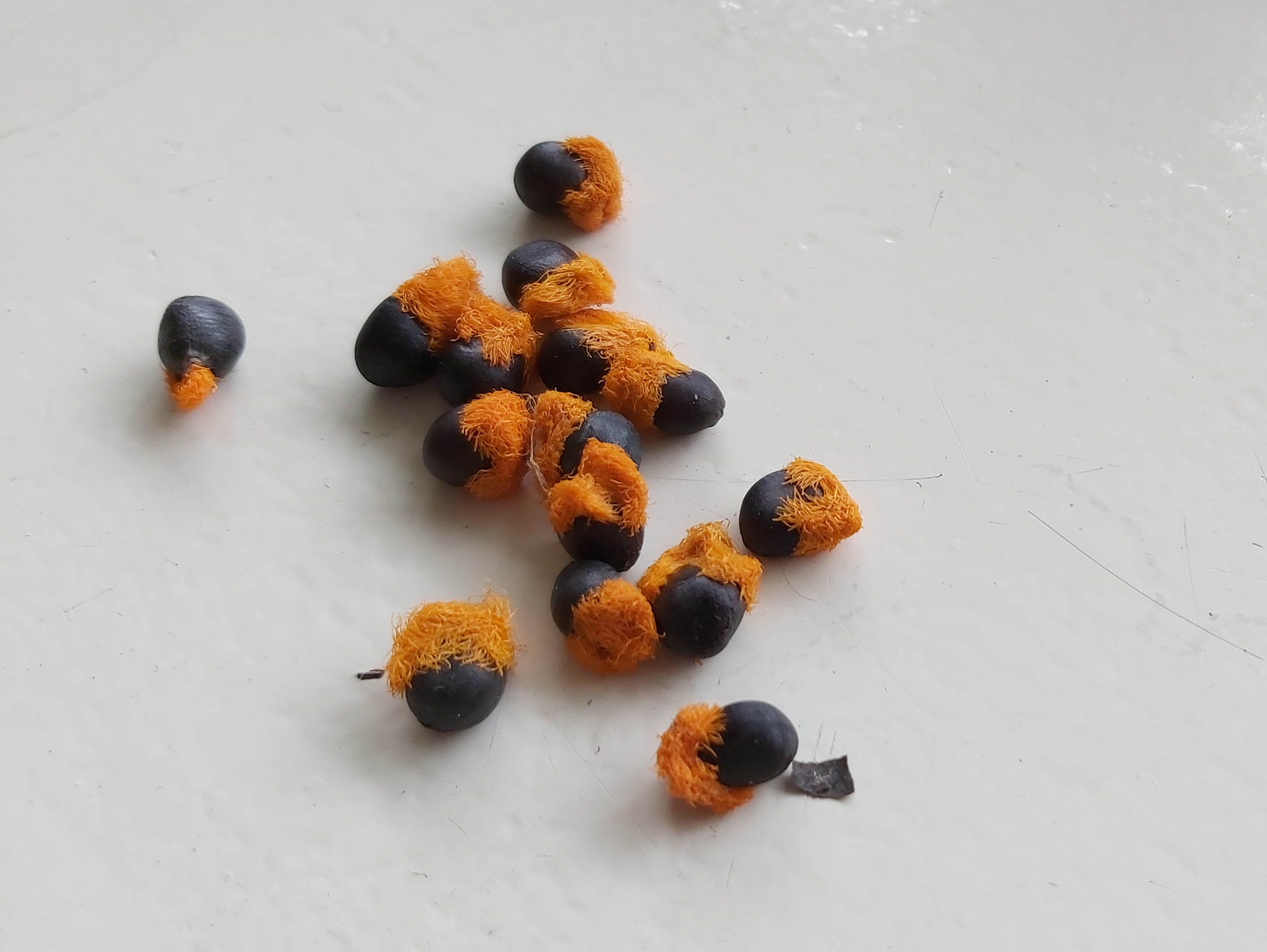
Strelitzia seed
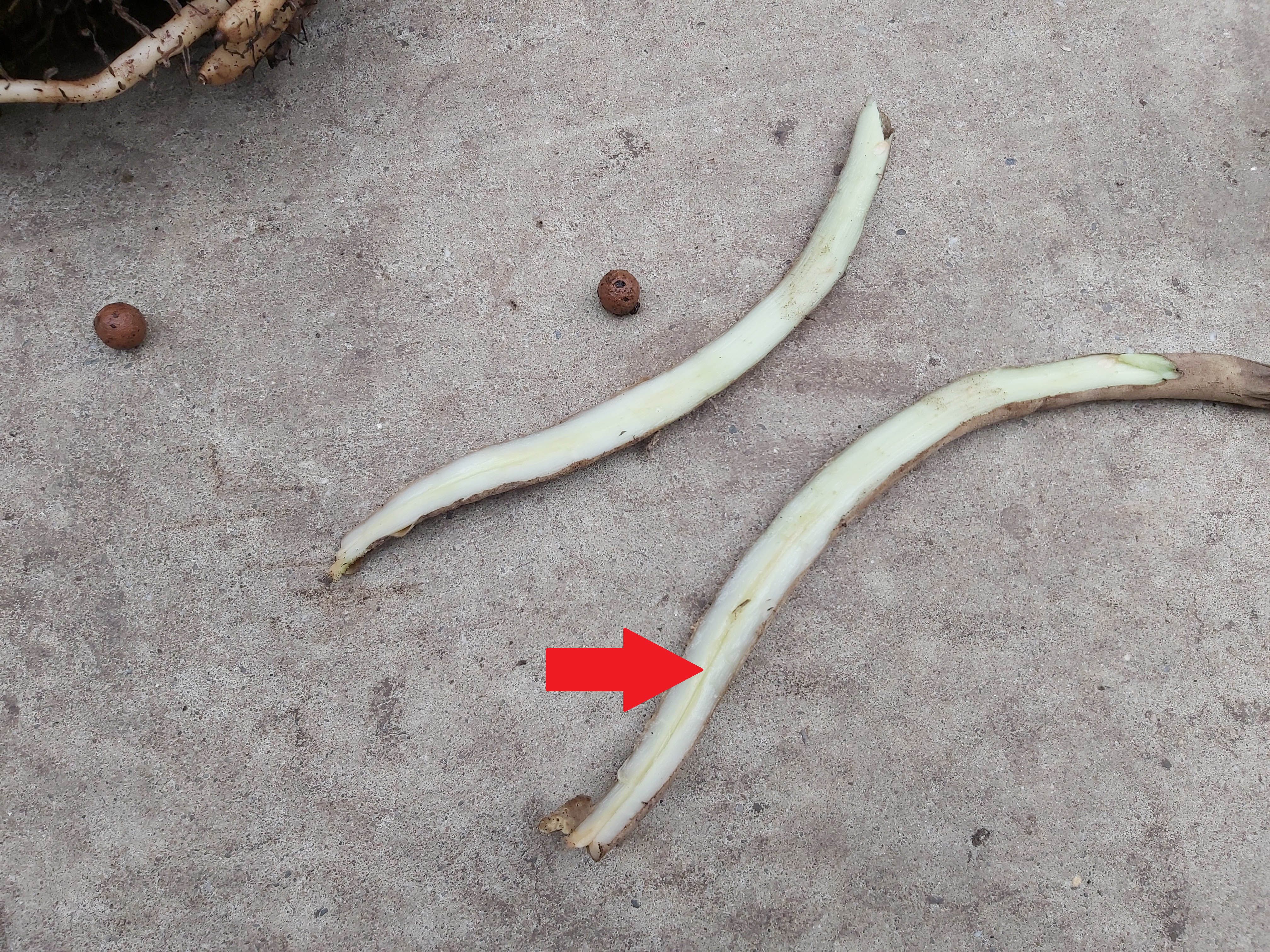
Thin root in the middle, the rest is mainly water storage
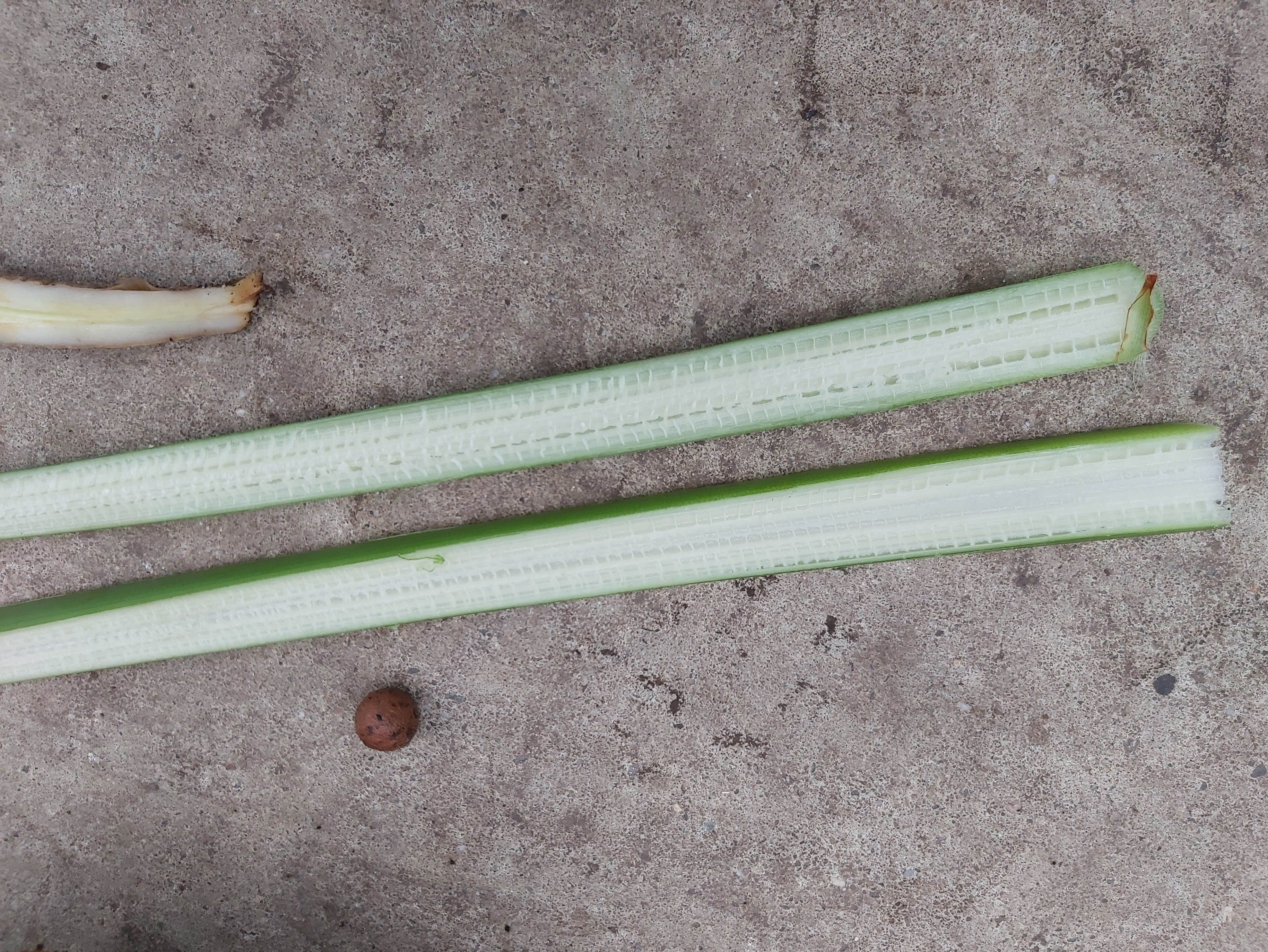
Cut stem, visible cell chambers
